
Review on 🐠 BOSIKE Aquarium Test Strips 6 in 1: Accurate Water Testing Kit for Freshwater, Fish Tank, and Fish Pond - Nitrate, Nitrite, Cl2, Carbonate, pH, and Total Hardness Testing with Ammonia Strips by Leah Nelson

Not very accurate and will disintegrate when immersed in water.
1. Color scales are almost useless. The strips, when immersed, show colors that do not match the chart on the bottle at all. And the color chart shows almost no difference between one reading and another. Pink, pink or pink for chlorine, nitrite and nitrate. Violet, lilac or violet for hardness. Green, green or green for carbonates. Orange orange or orange for body. There are very little differences in hue from one measurement to the next, and none of them match the color of the strips. And nearly all tests were dark enough to show the highest readings on every scale on every pad. Also, in almost every test (4 out of 5) the pads fell off the strip into the tank during a 2 second dive. And they are very difficult to retrieve from the bottom of the aquarium as they are tiny and easily pass between tweezers or gripping tools. This means that only 1 in 5 of these tests is actually usable. Next they will test you. Fall for 2 seconds, then immediately read horizontally. Most strips contain liquid in the pads and will run into the adjacent test, invalidating its color even if you gently hold it flat. Again, 1 out of 5 tests works and fewer have no color blur. Now let's talk about accuracy. Here is nothing. I compared 2 tanks with similar readings using my API master test kit. The API kit does not test for carbonates, chlorine or general hardness, but it does test for ammonia, which this Bosike test cannot. To solve this problem, I bought the corresponding individual API liquid tests and Bosike ammonia test strips. So I could compare them. The pH tests of API Tank 1 and 2 were both 7.6. Barefoot says 8.4 on one tank and 8.0 on the other. Since they were so far away, I checked the pH again. Both API pH tests again showed 7.6. This time both Bosike tests showed 8.0. I did a third test with just Bosike and one test showed 8.4 and the other 7.6. As such, Bosick's tests were incoherent and inaccurate. But here, too, the color difference from one reading to the next is very small, and that leaves many questions unanswered about the interpretation of which shade of orange it is. I then tested the ammonia with the API and it showed a slightly lighter hue than the 0.25 level on one. tank and no ammonia on the other side. Bosike tests showed between 3 and 6 on both tanks. Far away again. I also have the Seachem Free Ammonia test icon which shows 0 free ammonia. So if I had 3-6ppm total ammonia like the Bosike pads show I would probably have high levels of free ammonia as well. The Seachem Badge and API Ammonia test vials again showed that the Bosike Ammonia test was far from ideal. The Ammonia Test Strip for Bosike is a separate test strip than the 6-in-1 test strip discussed here. But since the API does this test, I also tested Bosike to see that there is no accuracy here with the ammonia Bosike test strips. Now the API nitrate test showed 0 to 0.25 for both tanks. The Bosike strip read 10 on both tanks. I checked. Same API metrics, same as Bosike tests. Now for the nitrate tests: The API tests were 0 on one tank and between 0 and 5 on the second tank. Tests at Bosike showed both tanks speeding between 100 and 200. Tested again and got the same API readings and the same excessively FALSE Bosike test results. I tested the API test for chlorine/chloramines (a separate test from their main suite) and got 0's for both tanks. Test strips read 0 to 0.8 in both reservoirs. So not too far, but still not exact. I checked with the API gh and kh test kit and got a hardness of 120 kh on both tanks. The API GH value was also around 120. Both tanks, tested with the Bosike test, showed the highest values. a complete guess as to where that reading actually lies. But again very inaccurate. I checked the Bosike values again and got the same reading, which was very difficult to judge with the color shading over 150 with Bosike. In summary, each individual Bosike strip was inaccurate enough to render the readings worthless. And MANY strip pads just fall off once submerged in water. Only really bad tests. The only plus I can give them is that they make testing much easier than fluent API testing. But if you can't get the rod to hold together or read with any degree of accuracy, what's the point? I strongly recommend that nobody spends money on Bosike Ammonia or 6-in-1 test strip kits. They are not accurate at all and most of them will fall apart once submerged in water. Update June 2021: The seller was contacted via email and offered a refund in exchange for deleting my review. You were polite. Revain would have been entitled to a refund anyway (which I didn't ask for). I also think it's important that customers considering a purchase can get feedback from those who have already purchased a product (good or bad) so they can make informed decisions. If this seller wants to remove all negative feedback, I suggest they upgrade or replace their product so customers are happier with the product, rather than trying to bribe customers into removing their feedback.
- The best in its niche
- will be added later
New products
Comments (0)
Top products in 🌊 Aquarium Test Kits
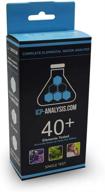
💦 Comprehensive Water Quality Analysis: ICP 33-Elemental Test Kit - Single Sample Kit

9 Review
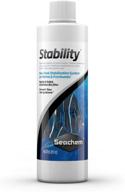
🐠 Seachem Stability 250ml: The Ultimate Fish Tank Stabilizer for Freshwater and Marine Aquariums

9 Review

🧪 Enhanced API Replacement Test Tubes with Caps - Ideal for API Freshwater Master Test Kit - 24 Count Box

8 Review

FUNSWTM 7 in 1 Aquarium Test Strips: Accurate Water Testing for pH, Nitrite, Nitrate, Chlorine, GH & KH Levels

8 Review
Another interesting products
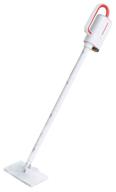
Steam cleaner Deerma Deerma DEM-ZQ610 EU, white/red

68 Review

Mini pump Xiaomi Mijia Electric Pump 1S, plastic, black

55 Review
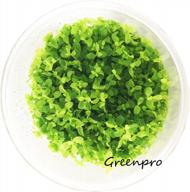
Greenpro Micranthemum Monte Carlo: Live Large Pearl Grass Aquatic Plant In Tissue Culture Cup For Freshwater Fish Tanks And Aquariums

49 Review
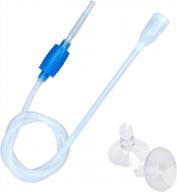
🐠 U-BCOO Aquarium Gravel Cleaner Fish Tank: Manual Siphon for Efficient Filter Gravel Cleaning and Water Change in Tanks

22 Review

